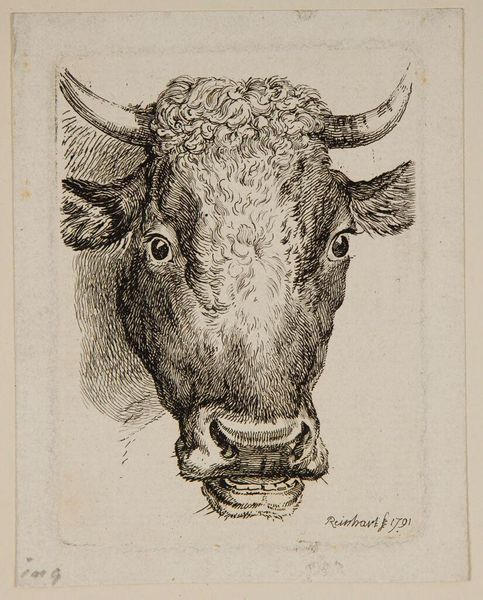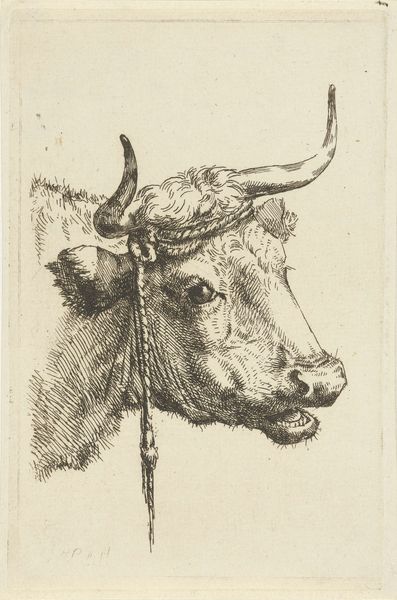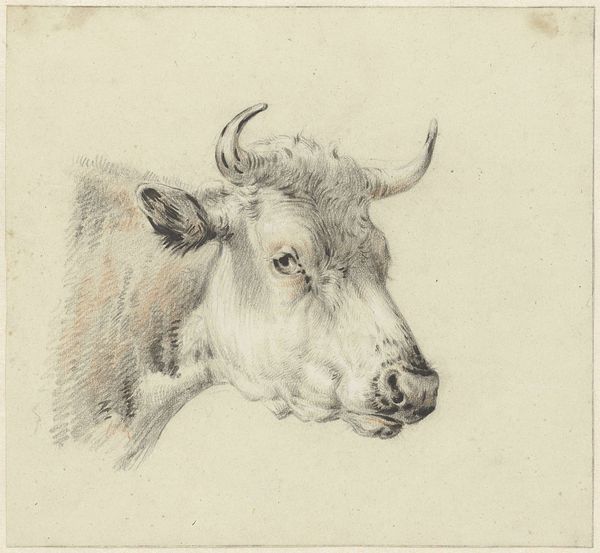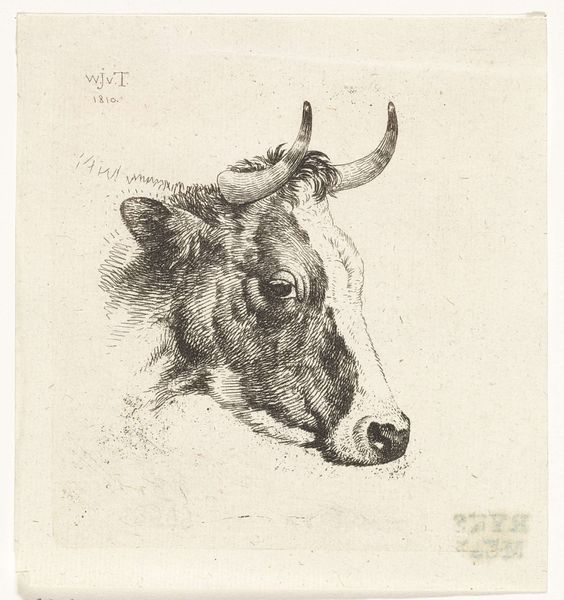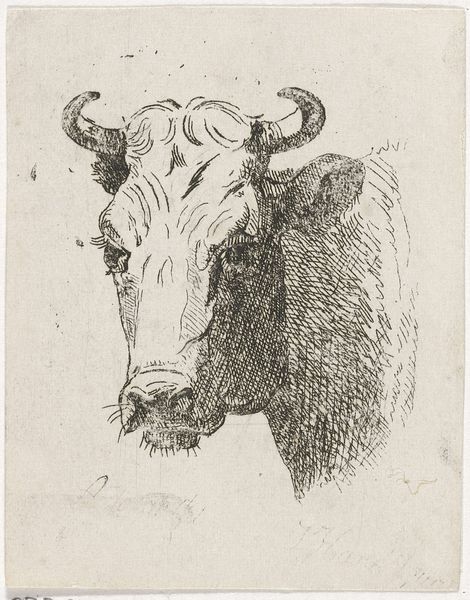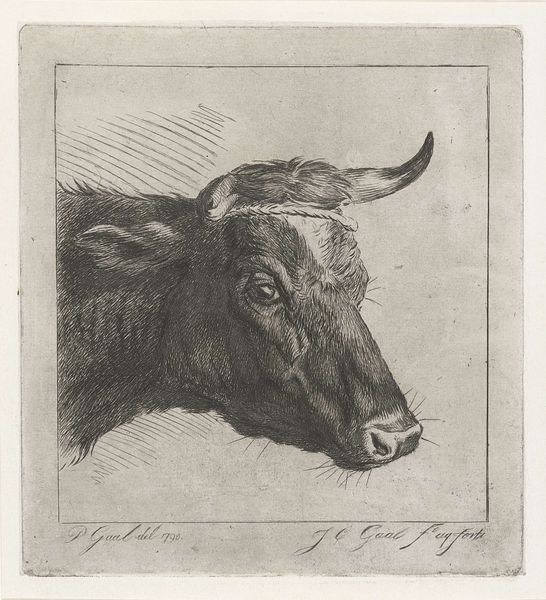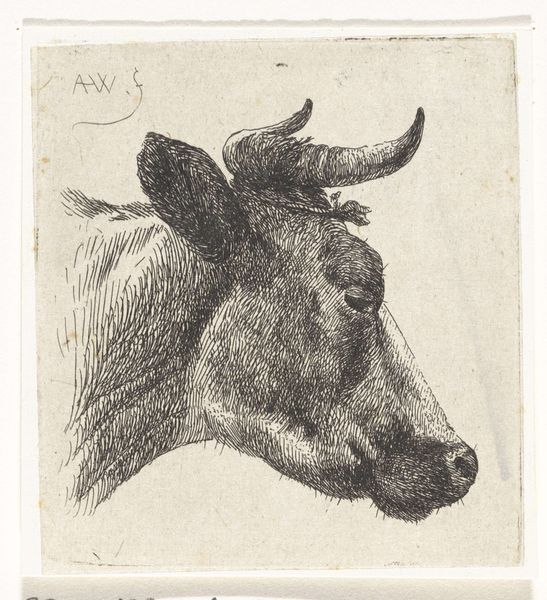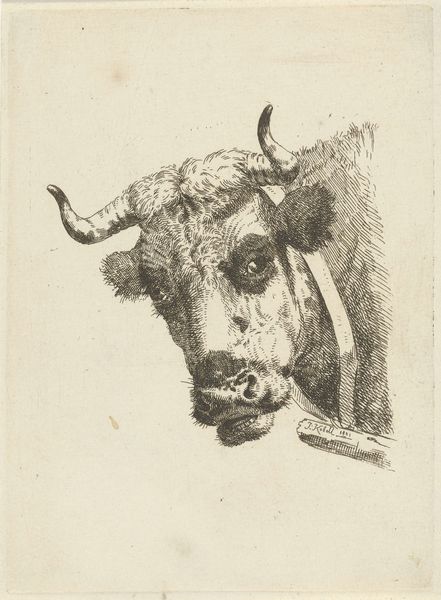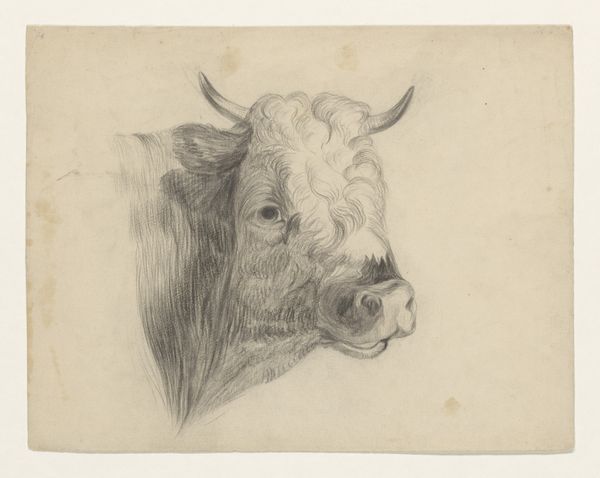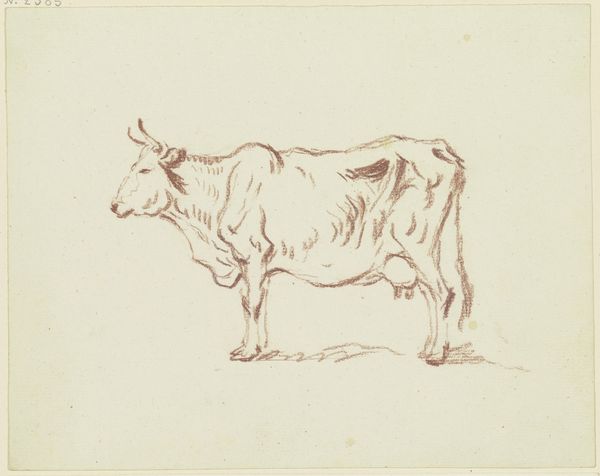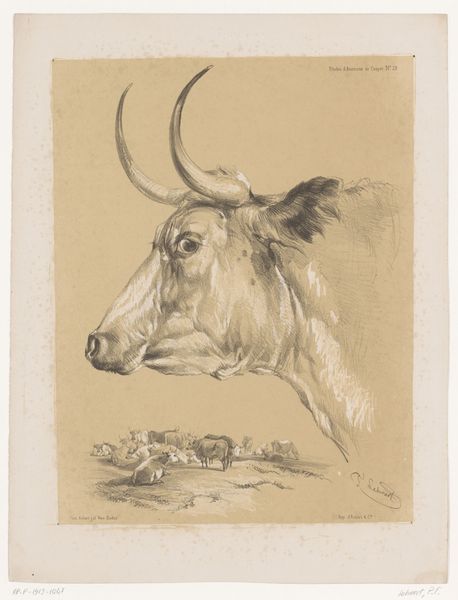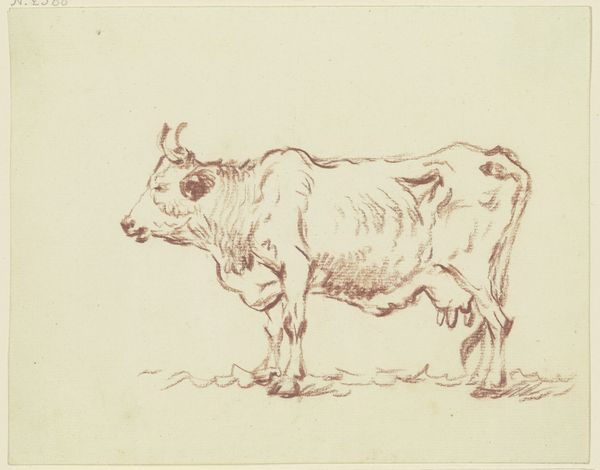
print, etching
#
portrait
# print
#
etching
#
old engraving style
#
realism
Dimensions: height 99 mm, width 74 mm
Copyright: Rijks Museum: Open Domain
Editor: Here we have Johann Christian Reinhart’s "Head of a Cow," etched in 1791. It’s remarkably…direct, isn't it? A very straightforward portrait. What do you see in a piece like this? Curator: Well, what strikes me immediately is the tension between the specific and the general. It’s clearly a portrait of an individual animal, carefully observed, but it also operates within a larger cultural framework. How were animals viewed and depicted at the end of the 18th century? What role did livestock play in the agricultural and economic landscape? Editor: So, it's less about the cow itself and more about what the cow represents? Curator: Exactly. Consider the rise of agricultural societies and the Enlightenment’s fascination with natural history. This image reflects an interest in categorizing and understanding the natural world, fitting into a visual culture that documented and celebrated the agricultural basis of society. It’s also important to ask: who was the audience for prints like this? Editor: Perhaps landowners or farmers, interested in…cattle breeding? Or maybe just the general public wanting a glimpse into rural life. Curator: Precisely. And think about how this image circulates today – in a museum, viewed perhaps through a lens of nostalgia or historical curiosity. Its meaning has inevitably shifted. Editor: It's interesting to consider how the context shapes our understanding, even centuries later. Thanks, I see it in a new light. Curator: Absolutely! It's all about understanding how power, institutions, and history intertwine with art’s reception.
Comments
No comments
Be the first to comment and join the conversation on the ultimate creative platform.
